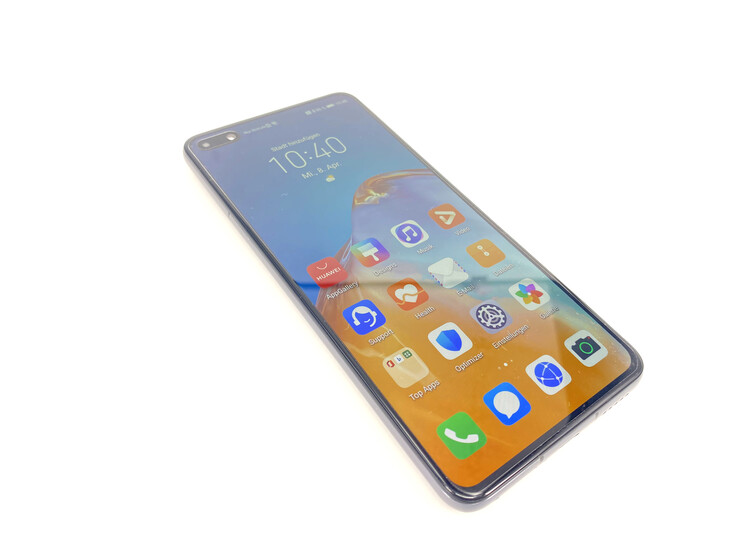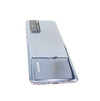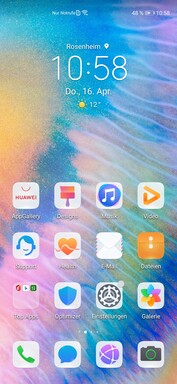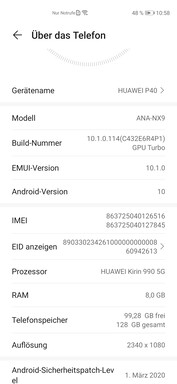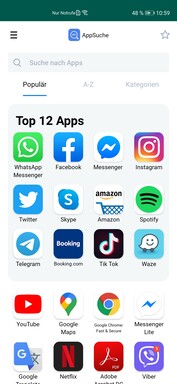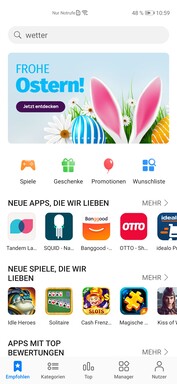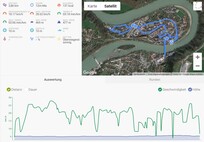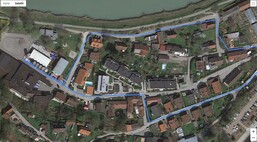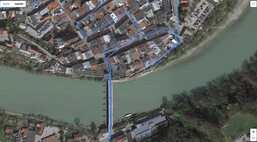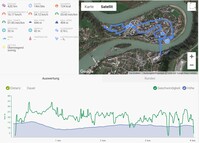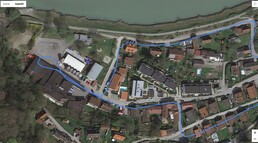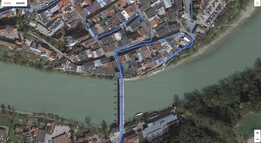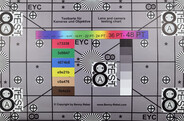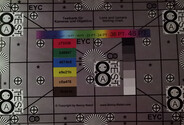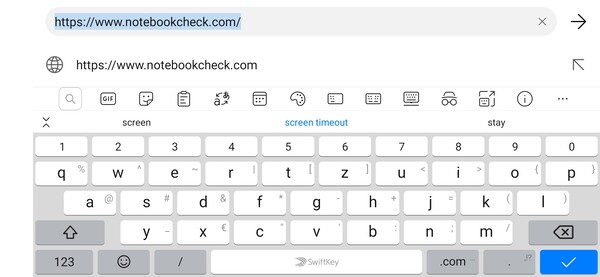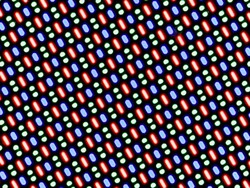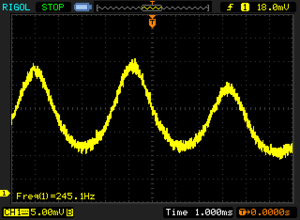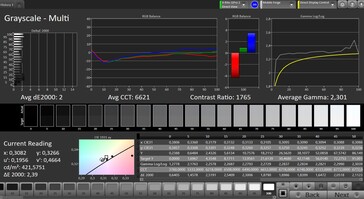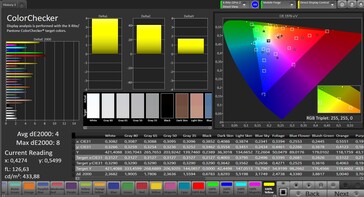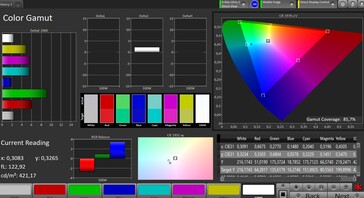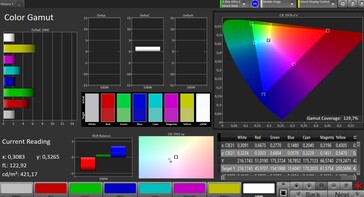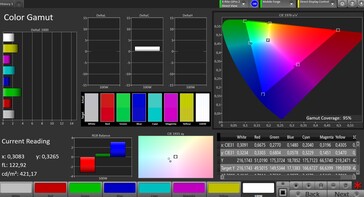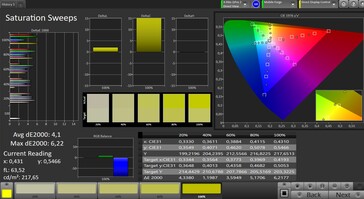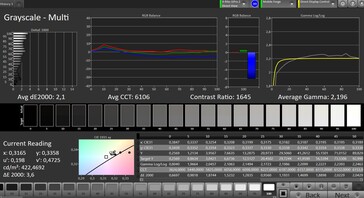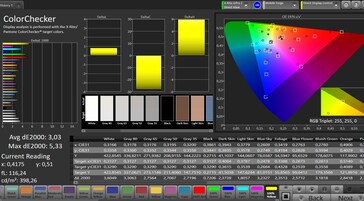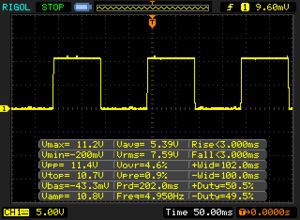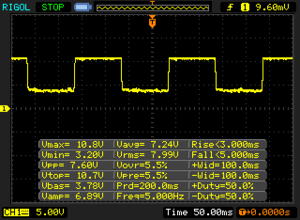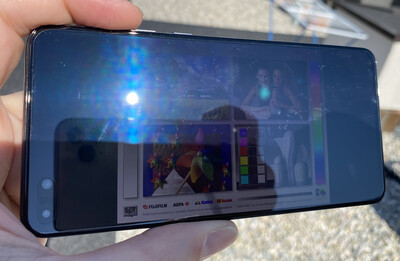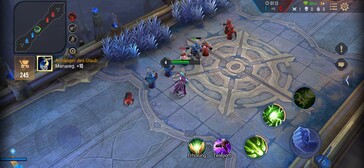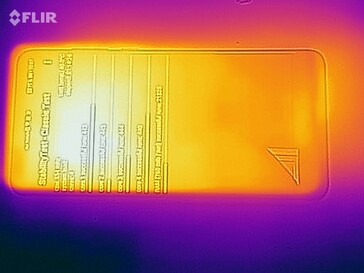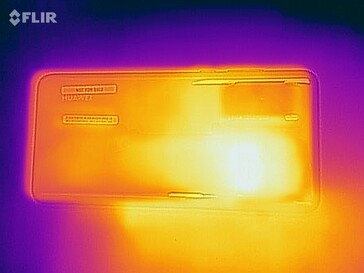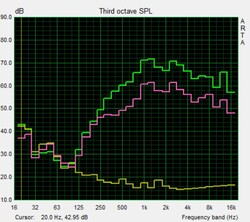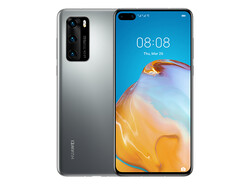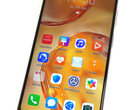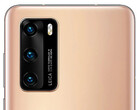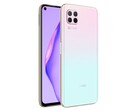Huawei P40 Smartphone Review – Tough sell despite its great camera
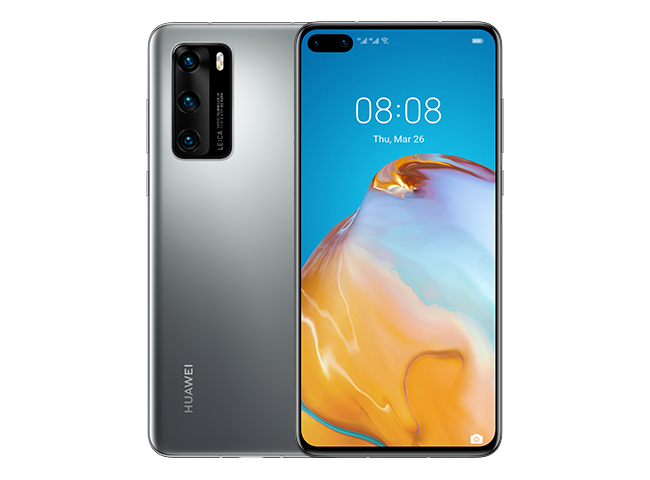
Huawei does not have it easy: After having built very popular smartphones that do not just do well in our reviews, the Chinese manufacturer is now faced with the trade war between the US and China, which at least outside of China takes away one of the important ingredients of its success: Google services. These are obligatory for commonly used apps such as Google Maps and Google's Play Store and also required by numerous other apps that rely on Google's modules.
Now, with the Huawei P40, the second flagship after the Mate 30 Pro has been released without these Google services and as our review of the Huawei P40 Pro has shown, it is complicated. Although on the one hand we are excited about the image quality, since judging from our first impressions, the pictures once again look amazing, it is as difficult for us as it will likely be for many users to imagine an Android phone working well without Google services and thus, without many familiar apps.
Since all these concerns almost seem to be taking the spotlight away from the smartphone itself, we chose to list the main specifications here: The Huawei P40 is a 5G smartphone that comes with a triple-camera system, which has once again been co-developed by Leica, and in some countries there is a new digital assistant called Celia. We are excited to see how well the smartphone performs in our tests.
Competing Devices
Rating | Date | Model | Weight | Drive | Size | Resolution | Price |
|---|---|---|---|---|---|---|---|
| 87.4 % v7 (old) | 04 / 2020 | Huawei P40 Kirin 990 5G, Mali-G76 MP16 | 175 g | 128 GB UFS 3.0 Flash | 6.10" | 2340x1080 | |
| 87.7 % v7 (old) | 03 / 2020 | Samsung Galaxy S20 Exynos 990, Mali-G77 MP11 | 163 g | 128 GB UFS 3.0 Flash | 6.20" | 3200x1440 | |
| 86.4 % v7 (old) | 05 / 2019 | Huawei P30 Kirin 980, Mali-G76 MP10 | 165 g | 128 GB UFS 2.1 Flash | 6.10" | 2340x1080 | |
| 86.5 % v7 (old) | 09 / 2019 | Apple iPhone 11 A13 Bionic, A13 Bionic GPU | 194 g | 64 GB SSD | 6.10" | 1792x828 | |
| 85.8 % v7 (old) | 10 / 2019 | OnePlus 7T SD 855+, Adreno 640 | 190 g | 128 GB UFS 3.0 Flash | 6.55" | 2400x1080 | |
| 88.6 % v6 (old) | 08 / 2019 | Xiaomi Mi 9T Pro SD 855, Adreno 640 | 191 g | 128 GB UFS 2.1 Flash | 6.39" | 2340x1080 |
Case – Waterproof Huawei Smartphone
In terms of the case's design, the Huawei P40 has taken a distinctly subtle approach: Out of the three color variations, blush gold is the most striking with black and gray being the two alternative options.
The glass back is reflective and has rounded-off edges on all four sides, which makes it look sleek. The smartphone makes a very solid impression overall and while it is also waterproof, the IP53 class hints at a slightly weaker protection compared to the Huawei P40 Pro.
At 175 grams (~6.17 oz), the P40 is slightly heavier than its predecessor, although it is still fairly lightweight compared to other phones in its price class. The smartphone is ergonomic, making it easy to handle, and thanks to the moderately-sized case as well as the edge-to-edge display it is suitable even for smaller hand sizes.
While the build quality is good overall, the clearances could have been more even and the transition from the screen to the metal frame also feels somewhat rough.
Features – Proprietary Memory Card Form Factor
Huawei demands 799 Euros (~$869) for the P40, which makes it 200 Euros (~$218) cheaper than the P40 Pro - this is quite a sizable difference. Meanwhile 128 GB of storage and 8 GB of RAM are the norm for current high-end smartphones. At least in Central Europe, other configurations are currently not available.
Although the modern Bluetooth 5.1 standard is on board, it unfortunately comes without aptX HD compatibility, since the enhanced audio codec belongs to the US company Qualcomm, which similarly to Google is not allowed to supply Huawei with its goods and services. In terms of wired audio output, users are limited to USB-C, since there is no headphone jack. While NFC is available, Google Pay cannot be used due to the missing Google services.
The dual-SIM variant (which most retailers have on offer, while carriers often sell the single-SIM variant) is compatible with eSIM and when the latter is being used, an additional, normal nano-SIM card can be used. Alternatively, users can insert a SIM card into both of the nano-SIM slots, although only one of them may use 5G. Huawei's own nano memory cards for storage expansion can also be inserted, which will occupy one of the two nano-SIM slots.
Software – The Google Crisis
Huawei has installed its EMUI 10 software, which is based on the open-source portion of Android. Since this includes the security patches, Huawei can continue to provide a secure Android experience and in our case, the security patches on our test device date back to the beginning of March 2020, making them fairly recent at the time of writing. However, since Google's services are no longer available to Huawei, the vast majority of Google apps such as the Google Play Store, Google Maps, Google Pay and many more as well as many third-party apps will not work.
With the Huawei services, Huawei now provides users with its own, alternative framework and the App Gallery is a stand-alone app store that is already quite popular in China. By contrast, the app store will not be quite as useful for Western users, since many apps have to be partially rewritten in order to be compatible to the Huawei services. Even though the manufacturer offers support and a monetary incentive for porting an app to the store, many app providers have not yet responded to this offer. Additionally, American providers such as Facebook are forbidden from making their apps available on the store officially.
Here, Huawei is also trying to help users with a workaround: Via an app called "App Search", users can find ways to install their favorite apps. For example, the apps can be downloaded as an .apk file from the manufacturer's web page, from the Amazon app store or from other sources. Compared to other Android smartphones, this is of course an inconvenience and a potential obstacle for novice users on top of being a potential security risk. For the initial setup, Huawei offers a free service in its service centers, where a Huawei associate will install all the desired apps on the device, provided they are available.
All of this still sounds somewhat inconvenient because it currently is - even we had to use the browser version of many tests and tools or download them from other sources. In this regard, the Huawei P40 feels like a downgrade compared to the experience with the Play Store.
That being said, EMUI offers an otherwise modern, easy to use interface that can be adjusted according to your own preferences with various designs. Unfortunately, we have not been able to test the digital assistant Celia in Germany yet, since it is currently only available in English, Spanish, and French and only in a select few countries. In this regard, we consider Huawei's marketing somewhat problematic, since the manufacturer still advertises the service in countries where it is not yet available and hides the information concerning availability in a small footnote.
Communication and GPS – Very Fast Wi-Fi and 5G
The Huawei P40 supports 5G and is compatible with both mmWave and sub-6. The modem, which was developed by Huawei itself, additionally supports a mode that uses 5G and 4G for even higher transfer speeds.
For local networking, there is a Wi-Fi 6 module, which we immediately tested with our reference router Netgear Nighthawk AX12. Here, the P40 performs extraordinarily well and beats its predecessor and many high-end smartphones by a large margin in terms of the peak Wi-Fi speed.
The smartphone can be used worldwide in numerous 4G networks, which should make it a good companion for frequent travelers.
| Networking | |
| iperf3 transmit AX12 | |
| Huawei P40 | |
| Samsung Galaxy S20 | |
| Huawei P30 | |
| Apple iPhone 11 | |
| OnePlus 7T | |
| Xiaomi Mi 9T Pro | |
| iperf3 receive AX12 | |
| Huawei P40 | |
| Samsung Galaxy S20 | |
| Apple iPhone 11 | |
| Huawei P30 | |
| OnePlus 7T | |
| Xiaomi Mi 9T Pro | |
Apart from the traditional dual-band GPS, the Huawei P40 supports various locating services such as BeiDou, Galileo, GLONASS, QZSS and the Indian NavIC. As a result, it should be easy to use the phone for navigation purposes anywhere in the world.
Evidently, the app GPS Test that we usually use relies on Google's location service, since it immediately crashes without any error messages.
The Huawei P40 achieved an acceptable result in our real-world bike ride, on which we also brought the professional navi Garmin Edge 520, although the recorded route still often deviated from the actual track. However, since the Garmin navi was also not able to track our exact position, it is possible that the conditions on this day were not optimal (clouds, etc.). Prospective buyers should still remain skeptical and if a smartphone with exact navigation capabilities is desired, testing the Huawei P40 yourself may be worthwhile.
Telephony and Call Quality – Great Microphone
Huawei's own telephony app is well-structured and intuitive to use. Modern features such as VoLTE or VoWi-Fi are of course almost obligatory for an expensive smartphone and included here as well. As mentioned before, using an eSIM is also possible.
We were particularly impressed by the call quality of the earpiece: Our conversational partner can be heard clearly, even though voices come across as slightly dull and higher volume levels introduce booming. However, these are extremely minor issues in practice. We were also pleased by the noise cancelling on our side, which ensures that our voice is transmitted in a very clear and distinct manner even in echoey rooms.
While the person on the other end of the line can be heard clearly on the speakerphone, the microphone is more susceptible to loud voices, which boom noticeably. That being said, the call quality of the Huawei P40 is very solid overall.
Cameras – Optical Zoom Is Limited to Photos
The camera modules co-developed by Leica and the associated software have always been a defining feature of Huawei's flagships. We have already taken a first look at the camera during our photo tour, which you can read about here, and the pictures can be found further below in this article as well.
Compared to the Huawei P40 Pro, there are very noticeable omissions: The wide-angle optics of the cheaper flagship phone P40 has significantly fewer pixels and there is also no periscope zoom. Similarly, the 3D depth of field camera has been cut. What is left is the main sensor that with 50 megapixels and a very large diameter of 1/2.28 inches is still excellent. Additionally, the sensor is able to combine multiple pixels via pixel-binning, which can increase the light yield and improve the results in low-light scenes.
The sharpness of the details in our test image is once again outstanding and the AI is great at detecting the right scenes in a vast majority of cases, which allows it to use the appropriate settings. Similarly, the zoom setup is very flexible, as the pictures from our photo tour beautifully illustrate: There is a lot of potential that encompasses panorama shots of a large public square, detailed macro photography and everything in-between.
While the level of detail is high in low-light situations, we still prefer the results from the iPhone 11 Pro Max by a slim margin. Furthermore, pictures taken with the Huawei P40 under normal lighting conditions appear very bright, which can lead to washed-out colors in a few cases. However, these are very minor complaints that do not detract from the overall excellent main camera of the P40.
Videos can be recorded at 4K and 60 FPS, although many effects are not available in this mode. Huawei also provides an option with automatically adjusted frame rates. For videos, only the digital zoom can be used and other optics aside from the main sensor are not accessible. Here, users get more options on smartphones from other manufacturers.
The front camera has a staggering resolution of 32 megapixels, it finally has an autofocus, and it captures very detailed pictures.
In our lab tests, the Huawei P40 showcases its great color accuracy and brightening even in low-light situations. Spotty color tiles such as the blue one in the bottom right are the only pieces of evidence for a barely lit scene. At the same time, the color representation is almost too bright under normal circumstances and we already took note of this when we captured our sample pictures outdoors.
The contrast and colors are reproduced well otherwise and fine lines remain discernible even in low-light scenes.
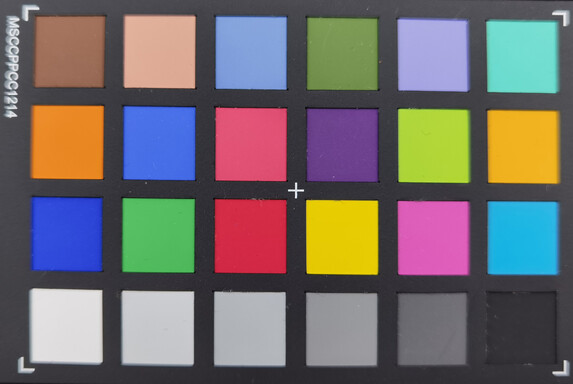
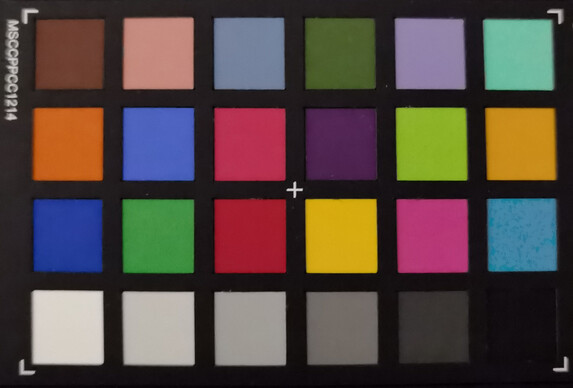
Accessories and Warranty – Protection for Two Years
Aside from the charger and a USB cable, the package of the Huawei P40 also includes a wired headset and a SIM tool. Huawei's online shop currently only lists a few cases that appear fairly basic and only cover the back of the Huawei P40. Regardless, Huawei charges 30 Euros (~$33) for them, which seems rather steep to us.
Huawei offers its customers a 24-month warranty. Due to the Google services situation, the warranty does not become void after installing apps from external sources on the smartphone.
Input Devices & Handling – Precise Touchscreen
Huawei has opted to use Swift Key as its keyboard app of choice. While the app is easy to use and offers a lot of settings, changing the theme requires logging in to a free account. Those who would rather use Google's Gboard can simply download the keyboard app and use it in the same way as with any other keyboard app.
The touchscreen is very precise and responsive. The fingerprint sensor below the screen very quickly and accurately detects our fingerprint and unlocks the smartphone almost as fast as a standalone fingerprint sensor. Furthermore, the screen can be unlocked via facial recognition by using Face Scan. Thanks to the infrared sensor on the front, this works even in total darkness.
Display – P40 Screen with Vivid Colors
Huawei has installed a display with an extended Full HD resolution in the P40. While this is a common choice for current high-end smartphones of this size, the Samsung Galaxy S20 shows that there are even higher-end options. Although the screen is HDR-capable, it only supports a maximum refresh rate of 60 Hz, whereas other manufacturers offer more advanced displays in this regard.
In terms of brightness, OnePlus and Samsung currently also have more to offer, which can be particularly beneficial outdoors or in bright environments.
The subjective impression is convincing: Colors look well-saturated and details are accurately represented.
| |||||||||||||||||||||||||
Brightness Distribution: 94 %
Center on Battery: 583 cd/m²
Contrast: ∞:1 (Black: 0 cd/m²)
ΔE ColorChecker Calman: 3.03 | ∀{0.5-29.43 Ø4.78}
ΔE Greyscale Calman: 2 | ∀{0.09-98 Ø5}
129.7% sRGB (Calman 2D)
Gamma: 2.301
CCT: 6621 K
| Huawei P40 AMOLED, 2340x1080, 6.1" | Samsung Galaxy S20 AMOLED, 3200x1440, 6.2" | Huawei P30 OLED, 2340x1080, 6.1" | Apple iPhone 11 IPS, 1792x828, 6.1" | OnePlus 7T AMOLED, 2400x1080, 6.6" | Xiaomi Mi 9T Pro AMOLED, 2340x1080, 6.4" | |
|---|---|---|---|---|---|---|
| Screen | 14% | 17% | 34% | -9% | 7% | |
| Brightness middle (cd/m²) | 583 | 745 28% | 561 -4% | 679 16% | 693 19% | 594 2% |
| Brightness (cd/m²) | 593 | 740 25% | 560 -6% | 671 13% | 703 19% | 607 2% |
| Brightness Distribution (%) | 94 | 97 3% | 95 1% | 93 -1% | 96 2% | 91 -3% |
| Black Level * (cd/m²) | 0.68 | |||||
| Colorchecker dE 2000 * | 3.03 | 2.67 12% | 1.5 50% | 0.8 74% | 3.42 -13% | 1.51 50% |
| Colorchecker dE 2000 max. * | 5.33 | 4.52 15% | 2.5 53% | 2.4 55% | 6.12 -15% | 4.27 20% |
| Greyscale dE 2000 * | 2 | 2 -0% | 1.8 10% | 1.1 45% | 3.3 -65% | 2.6 -30% |
| Gamma | 2.301 96% | 2.092 105% | 2.2 100% | 2.24 98% | 2.265 97% | 2.219 99% |
| CCT | 6621 98% | 6240 104% | 6512 100% | 6610 98% | 6799 96% | 6390 102% |
| Contrast (:1) | 999 |
* ... smaller is better
Screen Flickering / PWM (Pulse-Width Modulation)
| Screen flickering / PWM detected | 245 Hz | ||
The display backlight flickers at 245 Hz (worst case, e.g., utilizing PWM) . The frequency of 245 Hz is relatively low, so sensitive users will likely notice flickering and experience eyestrain at the stated brightness setting and below. In comparison: 53 % of all tested devices do not use PWM to dim the display. If PWM was detected, an average of 8111 (minimum: 5 - maximum: 343500) Hz was measured. | |||
Short response times are particularly important for gamers, since they ensure that no small detail is lost. Here, the Huawei P40 shines. The color accuracy is good as well, as our test with the spectrophotometer and the software CalMAN shows.
Users can choose between two color settings: "Vivid" offers stronger colors, while the colors are slightly more accurate on "normal". Meanwhile, the color balance can be manually tweaked or adjusted with the presets "warm", "cold" and "standard".
Display Response Times
| ↔ Response Time Black to White | ||
|---|---|---|
| 6 ms ... rise ↗ and fall ↘ combined | ↗ 3 ms rise | |
| ↘ 3 ms fall | ||
| The screen shows very fast response rates in our tests and should be very well suited for fast-paced gaming. In comparison, all tested devices range from 0.1 (minimum) to 240 (maximum) ms. » 17 % of all devices are better. This means that the measured response time is better than the average of all tested devices (20.2 ms). | ||
| ↔ Response Time 50% Grey to 80% Grey | ||
| 8 ms ... rise ↗ and fall ↘ combined | ↗ 3 ms rise | |
| ↘ 5 ms fall | ||
| The screen shows fast response rates in our tests and should be suited for gaming. In comparison, all tested devices range from 0.165 (minimum) to 636 (maximum) ms. » 19 % of all devices are better. This means that the measured response time is better than the average of all tested devices (31.6 ms). | ||
The viewing angles of the AMOLED display warrant no criticism. Even when looking at the display from an angle, the screen content remains undistorted.
Outdoor use shows the limitations of the screen resulting from its low maximum brightness, and while there are no issues in the shade it becomes very hard to read the screen in direct sunlight.
Performance – Powerful Hardware
The HiSilicon Kirin 990 5G is an in-house development from Huawei's subsidiary. The SoC is supposed to deliver a performance level that is worthy of a flagship smartphone. In order to achieve this, it uses a total of eight cores, which are divided into three clusters: There are two cores with a very high clock speed for extremely demanding workloads, two fast cores for medium-high intensity workloads, and four slower cores for standard tasks.
The benchmark results of our Huawei smartphone show it to be very fast, which means it can at least compete with other recent high-end phones. While it cannot quite match the Snapdragon 865 in terms of raw processing power, users will be hard-pressed to notice the difference in practice.
The ARM Mali-G76 MP16, which is used as the graphics unit, achieves very good results in our benchmarks as well.
| PCMark for Android | |
| Work performance score (sort by value) | |
| Huawei P40 | |
| Samsung Galaxy S20 | |
| Huawei P30 | |
| OnePlus 7T | |
| Xiaomi Mi 9T Pro | |
| Average HiSilicon Kirin 990 5G (10628 - 14814, n=4) | |
| Work 2.0 performance score (sort by value) | |
| Huawei P40 | |
| Samsung Galaxy S20 | |
| Huawei P30 | |
| OnePlus 7T | |
| Xiaomi Mi 9T Pro | |
| Average HiSilicon Kirin 990 5G (8512 - 11509, n=4) | |
| GFXBench 3.1 | |
| on screen Manhattan ES 3.1 Onscreen (sort by value) | |
| Huawei P40 | |
| Samsung Galaxy S20 | |
| Huawei P30 | |
| Apple iPhone 11 | |
| OnePlus 7T | |
| Xiaomi Mi 9T Pro | |
| Average HiSilicon Kirin 990 5G (26 - 57, n=4) | |
| Average of class Smartphone (11 - 166, n=158, last 2 years) | |
| 1920x1080 Manhattan ES 3.1 Offscreen (sort by value) | |
| Huawei P40 | |
| Samsung Galaxy S20 | |
| Huawei P30 | |
| Apple iPhone 11 | |
| OnePlus 7T | |
| Xiaomi Mi 9T Pro | |
| Average HiSilicon Kirin 990 5G (33 - 75, n=4) | |
| Average of class Smartphone (8.4 - 413, n=158, last 2 years) | |
| AnTuTu v8 - Total Score (sort by value) | |
| Huawei P40 | |
| Samsung Galaxy S20 | |
| Average HiSilicon Kirin 990 5G (450373 - 527856, n=4) | |
We used the Huawei browser to perform our benchmarks. Even though theoretically Chrome could also be installed, we decided to test the preinstalled browser, which users will be more likely to use. The result: The Huawei phone performs quite well with this browser and is on par with current high-end phones using Chrome.
In practice, browsing the web is a very pleasant experience, since web pages and images load very quickly.
| Jetstream 2 - 2.0 Total Score | |
| Average of class Smartphone (23.8 - 387, n=154, last 2 years) | |
| Apple iPhone 11 (Safari Mobile 13.0) | |
| OnePlus 7T (Chrome 76) | |
| Average HiSilicon Kirin 990 5G (55.6 - 70, n=4) | |
| Xiaomi Mi 9T Pro (Chrome 75) | |
| Huawei P40 (Huawei Browser 10.1) | |
| Samsung Galaxy S20 (Chrome 80) | |
| Huawei P30 (Chrome 73) | |
| JetStream 1.1 - Total Score | |
| Apple iPhone 11 (Safari Mobile 13.0) | |
| OnePlus 7T (Chrome 76) | |
| Average HiSilicon Kirin 990 5G (103.2 - 116.6, n=4) | |
| Huawei P40 (Huawei Browser 10.1) | |
| Huawei P30 (Chrome 73) | |
| Xiaomi Mi 9T Pro | |
| Samsung Galaxy S20 (Chrome 80) | |
| Speedometer 2.0 - Result 2.0 | |
| Average of class Smartphone (15.2 - 643, n=128, last 2 years) | |
| Apple iPhone 11 (Safari Mobile 13.0) | |
| OnePlus 7T (Chome 76) | |
| Average HiSilicon Kirin 990 5G (63 - 71.8, n=4) | |
| Huawei P40 (Huawei Browser 10.1) | |
| Huawei P30 (Chrome 73) | |
| Samsung Galaxy S20 (Chome 80) | |
| Xiaomi Mi 9T Pro (Chrome 75) | |
| WebXPRT 3 - Overall | |
| Apple iPhone 11 (Safari Mobile 13.0) | |
| Average of class Smartphone (38 - 380, n=35, last 2 years) | |
| Xiaomi Mi 9T Pro (Chrome 75) | |
| Average HiSilicon Kirin 990 5G (95 - 124, n=3) | |
| OnePlus 7T (Chrome 76) | |
| Samsung Galaxy S20 (Chrome 80) | |
| Huawei P40 (Huawei Browser 10.1) | |
| Huawei P30 (Chrome 73) | |
| Octane V2 - Total Score | |
| Average of class Smartphone (2228 - 121337, n=201, last 2 years) | |
| Apple iPhone 11 (Safari Mobile 13.0) | |
| OnePlus 7T (Chrome 76) | |
| Average HiSilicon Kirin 990 5G (20917 - 23690, n=4) | |
| Huawei P40 (Huawei Browser 10.1) | |
| Huawei P30 (Chrome 73) | |
| Xiaomi Mi 9T Pro (Chrome 75) | |
| Samsung Galaxy S20 (Chrome 80) | |
| Mozilla Kraken 1.1 - Total | |
| Samsung Galaxy S20 (Chrome 80) | |
| Xiaomi Mi 9T Pro (Chrome 75) | |
| Huawei P40 (Huawei Browser 10.1) | |
| Huawei P30 (Chrome 73) | |
| Average HiSilicon Kirin 990 5G (1914 - 2287, n=4) | |
| OnePlus 7T (Chrome 76) | |
| Average of class Smartphone (257 - 28190, n=156, last 2 years) | |
| Apple iPhone 11 (Safari Mobile 13.0) | |
* ... smaller is better
In our Huawei test with the app AndroBench, the read and write speed results of the internal storage are relatively fast, although as the Samsung Galaxy S20 proves, there are smartphones that are even faster in terms of the write speeds.
The storage can be expanded via Huawei's own nano memory cards. While they are even smaller than microSD cards, they cannot yet be used in as many devices. Overall, the Huawei P40 read from and wrote to the external memory card very quickly in our test.
| Huawei P40 | Samsung Galaxy S20 | Huawei P30 | OnePlus 7T | Xiaomi Mi 9T Pro | Average 128 GB UFS 3.0 Flash | Average of class Smartphone | |
|---|---|---|---|---|---|---|---|
| AndroBench 3-5 | 34% | -13% | -26% | -27% | 21% | 232% | |
| Sequential Read 256KB (MB/s) | 1592 | 1542 -3% | 909 -43% | 1406 -12% | 809 -49% | 1520 ? -5% | 2223 ? 40% |
| Sequential Write 256KB (MB/s) | 212.9 | 670 215% | 186 -13% | 218.4 3% | 196.9 -8% | 546 ? 156% | 1838 ? 763% |
| Random Read 4KB (MB/s) | 189.4 | 205.3 8% | 138.8 -27% | 170.1 -10% | 142.5 -25% | 206 ? 9% | 295 ? 56% |
| Random Write 4KB (MB/s) | 197 | 228.1 16% | 195.3 -1% | 29.9 -85% | 148.5 -25% | 193.9 ? -2% | 335 ? 70% |
| Sequential Read 256KB SDCard (MB/s) | 81.6 ? | 66.3 ? -19% | 82.8 ? 1% | 67.3 ? -18% | |||
| Sequential Write 256KB SDCard (MB/s) | 66.4 ? | 57.7 ? -13% | 71.3 ? 7% | 55.7 ? -16% |
Gaming – Accurate Controls
Playing games at up to 60 FPS is no problem on the Huawei P40. PUBG Mobile runs smoothly even at high settings and Arena of Valor runs well, too, despite the frame-rate cap of 30 FPS.
The touchscreen and gyroscope are very accurate, which guarantees a fun experience when playing long sessions at night on the Huawei P40.
Emissions – Good Mono Speaker
Temperature
While the Huawei phone becomes warm under load, the temperatures never become uncomfortable. While idling, the surface temperatures of the smartphone do not increase.
Since this suggests that Huawei has done a solid job of managing the heat development, we used GFXBench's battery test to determine whether this remains true under prolonged stress. Here, the SoC showed an unusual behavior: By the 12th benchmark loop, the performance level dropped significantly to about 50%. By the time the 14th loop has been completed, the SoC bounced back to its initial performance level. These fluctuations occurred fairly consistently until the 30th loop.
Evidently, the SoC is trying to restore its initial performance level after a low-load phase and regularly succeeds for short periods of time. However, this also implies that the maximum performance level cannot be reliably accessed after prolonged stress periods.
(+) The maximum temperature on the upper side is 39.9 °C / 104 F, compared to the average of 35.2 °C / 95 F, ranging from 21.9 to 247 °C for the class Smartphone.
(±) The bottom heats up to a maximum of 41.3 °C / 106 F, compared to the average of 34 °C / 93 F
(+) In idle usage, the average temperature for the upper side is 31.3 °C / 88 F, compared to the device average of 32.9 °C / 91 F.
Speakers
Although a mono speaker in a high-end smartphone sounds like an outdated concept, we are still open to it, provided it delivers a decent audio experience.
As it happens, the mono speaker performs quite well: It produces deep mids, sounds fairly warm and it is well-balanced. While voices sound somewhat unpleasant at maximum volume, this effect can be reduced by lowering the volume by one or two steps.
For audio output, both Bluetooth 5.1 and a USB-C port on the bottom edge of the smartphone are available. Both options can be used to achieve a clean sound on external audio devices. However, Bluetooth audio does not benefit from aptX HD, which slightly reduces the audio quality. The included wired headset sounds decent, although there are far better alternatives.
Huawei P40 audio analysis
(±) | speaker loudness is average but good (79.6 dB)
Bass 100 - 315 Hz
(-) | nearly no bass - on average 22% lower than median
(±) | linearity of bass is average (10.4% delta to prev. frequency)
Mids 400 - 2000 Hz
(+) | balanced mids - only 4.7% away from median
(+) | mids are linear (5.7% delta to prev. frequency)
Highs 2 - 16 kHz
(+) | balanced highs - only 3.4% away from median
(+) | highs are linear (5.5% delta to prev. frequency)
Overall 100 - 16.000 Hz
(±) | linearity of overall sound is average (20.8% difference to median)
Compared to same class
» 37% of all tested devices in this class were better, 8% similar, 54% worse
» The best had a delta of 11%, average was 35%, worst was 134%
Compared to all devices tested
» 55% of all tested devices were better, 8% similar, 37% worse
» The best had a delta of 4%, average was 24%, worst was 134%
Huawei P30 audio analysis
(+) | speakers can play relatively loud (82.4 dB)
Bass 100 - 315 Hz
(-) | nearly no bass - on average 17.5% lower than median
(±) | linearity of bass is average (11.6% delta to prev. frequency)
Mids 400 - 2000 Hz
(±) | higher mids - on average 5.3% higher than median
(+) | mids are linear (5.3% delta to prev. frequency)
Highs 2 - 16 kHz
(±) | higher highs - on average 7.8% higher than median
(+) | highs are linear (5.3% delta to prev. frequency)
Overall 100 - 16.000 Hz
(±) | linearity of overall sound is average (21.5% difference to median)
Compared to same class
» 42% of all tested devices in this class were better, 8% similar, 50% worse
» The best had a delta of 11%, average was 35%, worst was 134%
Compared to all devices tested
» 60% of all tested devices were better, 7% similar, 33% worse
» The best had a delta of 4%, average was 24%, worst was 134%
Energy Management – The Huawei P40 Lasts for a Long Time
Energy Consumption
Like with its predecessor, the Huawei P30, the flagship from the current year is also relatively economical under load: A peak consumption of only 6.9 watts is a very good value that many competitors struggle to achieve. Although there are devices that consume less power while idling, the Huawei P40 still reaches good results in terms of the overall consumption.
| Off / Standby | |
| Idle | |
| Load |
|
Key:
min: | |
| Huawei P40 3800 mAh | Samsung Galaxy S20 4000 mAh | Huawei P30 3650 mAh | Apple iPhone 11 3110 mAh | OnePlus 7T 3800 mAh | Xiaomi Mi 9T Pro 4000 mAh | Average HiSilicon Kirin 990 5G | Average of class Smartphone | |
|---|---|---|---|---|---|---|---|---|
| Power Consumption | -11% | -2% | -7% | -8% | 6% | -11% | -18% | |
| Idle Minimum * (Watt) | 1 | 0.9 10% | 0.69 31% | 0.56 44% | 0.9 10% | 0.7 30% | 1.24 ? -24% | 0.848 ? 15% |
| Idle Average * (Watt) | 1.9 | 1.5 21% | 2.41 -27% | 2.99 -57% | 1.4 26% | 1 47% | 2.33 ? -23% | 1.434 ? 25% |
| Idle Maximum * (Watt) | 2.4 | 2 17% | 2.51 -5% | 3.02 -26% | 2.9 -21% | 1.3 46% | 2.49 ? -4% | 1.618 ? 33% |
| Load Average * (Watt) | 3.5 | 4.8 -37% | 3.86 -10% | 4.17 -19% | 4.7 -34% | 5.2 -49% | 3.55 ? -1% | 7.01 ? -100% |
| Load Maximum * (Watt) | 6.9 | 11.5 -67% | 6.96 -1% | 5.44 21% | 8.3 -20% | 10 -45% | 7.09 ? -3% | 11.3 ? -64% |
* ... smaller is better
Battery Life
With a capacity of 3,800 mAh, the battery of the Huawei P40 is quite big compared to competing solutions. At 13:26 hours, the smartphone's runtimes in our Wi-Fi test are convincing as well and promise two workdays of average use without having to recharge the device.
Huawei Super Charge can deliver up to 22.5 watts of power and fully charges the battery in just under 2 hours. Unlike the P40 Pro, the Huawei P40 cannot be charged wirelessly.
| Huawei P40 3800 mAh | Huawei P30 3650 mAh | Samsung Galaxy S20 4000 mAh | Apple iPhone 11 3110 mAh | OnePlus 7T 3800 mAh | Xiaomi Mi 9T Pro 4000 mAh | |
|---|---|---|---|---|---|---|
| Battery runtime | -7% | -3% | 16% | 5% | -4% | |
| Reader / Idle (h) | 34.4 | 31.9 -7% | 35.1 2% | 46.1 34% | 33.4 -3% | 29.5 -14% |
| H.264 (h) | 17.5 | 17.5 0% | 13.5 -23% | 19.1 9% | 16.1 -8% | 16.5 -6% |
| WiFi v1.3 (h) | 13.4 | 11.9 -11% | 12.1 -10% | 14.4 7% | 14.9 11% | 12.7 -5% |
| Load (h) | 3.9 | 3.5 -10% | 4.7 21% | 4.5 15% | 4.7 21% | 4.2 8% |
Pros
Cons
Verdict – Don't Abandon All Hope
Our initial question "Can they make this work?" of course alluded to the fact that the Huawei P40 does not have access to the Google services. The answer is a definitive "Maybe". On the one hand, the Huawei P40 is a high-end smartphone with a good camera setup, reasonable battery runtimes, fast performance and fast Wi-Fi.
On the other hand, there is one big drawback: The lack of Google services makes using Google Maps or Google's Play Store impossible, while also potentially causing issues with many other apps as well. Even though the App Gallery is steadily growing and installing apps from unknown sources is possible at least in theory, the latter entails a high security risk for normal users, and even for advanced users it can be difficult to tell whether download files from external sources have been manipulated.
Huawei is supporting users in many ways, which include apps and services to assist users during the initial setup. It is a tough sell regardless, particularly since there are so many other alternative smartphones that just work out of the box.
That being said, since the development of Huawei's ecosystem has been moving forward more quickly than expected, it is possible for the situation to change in one or two years, making Huawei a real alternative for anyone who does not want Google on their smartphone.
The Huawei P40 is a premium high-end smartphone that forces users to compromise due to the lack of Google services.
Furthermore, the manufacturer appears to be primarily focusing on the P40 Pro, and as a result it feels as though the P40 falls behind in a direct comparison with its competition: Firstly, only one of the optics can be used to record videos and the optical zoom is limited to pictures.
Secondly, the refresh rate is limited to the usual 60 Hz, whereas the Galaxy S20 has more to offer. The display's brightness could also be higher, there is no wireless charging, and on top of that prospective buyers will have to ask themselves whether they want to buy a dedicated memory card just for the Huawei P40, since microSD is not supported.
Huawei P40
- 08/31/2022 v7 (old)
Florian Schmitt




